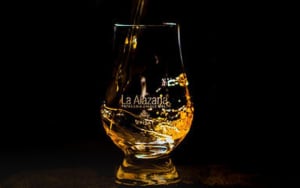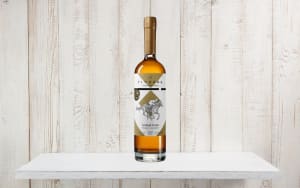Imagine taking a fine single malt and letting it rest in the harshest cold on the planet. Not just a quick chill over ice, but years in temperatures that plunge way below zero. That's exactly what happened with a new whisky from Argentina. It's the first ever to mature right in Antarctica, and folks are already buzzing about what this extreme aging does to the spirit.
The story starts down in Patagonia, where La Alazana set up shop back in 2011. This spot claims the title of Argentina's very first single malt distillery. They craft their whisky using barley grown right in the local fields, peat dug from nearby bogs, and pure water trickling down from the towering Andes Mountains. It's a true homegrown operation, pulling everything from the rugged land around them.
In 2022, the team at La Alazana picked out two special casks for an adventure like no other. These were five-year-old virgin oak barrels filled with their single malt. Before heading out, they moved the whisky into barrels that once held Maker's Mark bourbon. Those ex-bourbon casks then made the long journey south to Antarctica. The destination? Base Marambio, an Argentine research station perched on Seymour Island. There, the barrels sat for a full three more years, braving the wild conditions of the frozen continent.
This whole idea didn't come straight from the distillery, though. It was sparked by Cask World, a company that hunts down and bottles whiskies from up-and-coming spots outside the usual powerhouses like Scotland or Ireland. The new release, named Isla Marambio after the area, fits into Cask World's ambitious Continent Series. This lineup plans to showcase whiskies matured on every single continent—eight in total, counting Zealandia and using New Zealand to stand in for it.
“By maturing whisky in eight radically different environments, the Continent Series invites scientists and enthusiasts alike to study how climate impacts maturation,” said Cask World Daniel Monk in a statement. He went on to explain the science behind it: “how polar pressure slows evaporation, how altitude amplifies oxidation, and how tropical warmth intensifies wood exchange. This isn’t just about flavor, it’s about understanding the Earth itself.”
Out on the ice, the barrels weren't tucked away in some cozy, heated room. No, they stayed in a simple uninsulated hut, fully exposed to whatever Antarctica threw at them. Temperatures swung from a bone-chilling –35°C up to a relatively mild 10°C. Any whisky drinker knows that heat and moisture are what drive the magic in aging. When things warm up, the liquid swells and pushes deep into the wood, pulling out rich colors and bold tastes. Cool it down, and the whisky shrinks back, leaving some of that behind. In such constant cold, you'd think not much happens between the spirit and the barrel. But the folks at La Alazana see it differently.
“When I was decanting it, there was a very special floral note that is not so strong in our whisky usually,” said Lila Serenelli, co-founder and distiller at La Alazana, in a statement. She shared her hunch: “There’s something that I think has happened. I can’t assure it, but it’s a thought… although there are temperature variations, the mid temperatures tend to be under zero. This movement allows extraction and oxidation, but holds the ethanol in and reduces evaporation. We’ll have better insight when we measure the ABV of the vatted whisky.”
That slower pace in the cold might lock in more alcohol and let subtle changes build over time without losing much to the so-called angel's share—the evaporation that claims a bit of every barrel. Less loss means more whisky at the end, and perhaps flavors that develop in ways you don't get in warmer cellars.
To dig deeper into what makes this whisky tick, samples are heading off for expert eyes and noses. Charles MacLean, a well-respected whisky authority from Scotland, will get a taste and share his thoughts. But it's not stopping at opinions. Scientists will run tests on samples from all eight whiskies in the series. They're looking for things like isotopic signatures, mineral traces, and other markers that tie the spirit straight to its maturing spot. Cask World calls this “the world’s first scientific paper on whisky terroir across all continents of Earth.” Terroir—that sense of place usually tied to wine—could show how the land, air, and weather shape what's in the glass.
The project stands on its own from La Alazana, but teaming up with Cask World opens doors to share it wider. Once the barrels made it back to Argentina, the whisky got bottled up. The total haul will split between the distillery and Cask World, with bottles hitting shelves sometime in 2026. No word yet on exact numbers or prices, but collectors and curious sippers will want to keep an eye out.
Think about the journey these casks took. From the windy plains of Patagonia, across oceans, to the vast white expanse of Antarctica, and then home again. It's more than a gimmick—it's a real experiment in how far you can push whisky making. Traditional aging happens in steady warehouse conditions, but here the environment does the heavy lifting. The cold might mute some oak influences, letting the original malt shine through with those unexpected floral hints Serenelli noticed.
For anyone who's spent years building a whisky collection or just enjoys a solid pour after a long day, this raises big questions. Does extreme cold create a cleaner, purer expression? Or does it preserve notes that heat would overwhelm? The upcoming analyses and tastings should give solid answers, backed by data instead of guesses.
La Alazana has already built a name with their Patagonian roots, but Isla Marambio takes it global in a bold way. Starting with local ingredients and now adding Antarctic maturation, they're blending old craft with new frontiers. It's the kind of innovation that keeps the whisky world exciting, especially for those who appreciate the stories behind the bottle as much as the liquid inside.
As the Continent Series rolls out, each release will highlight a different corner of the world. Tropical heat speeding up interactions, high altitudes thinning the air and changing oxidation—these are variables distillers usually control, not embrace. By letting nature run wild, Cask World and partners like La Alazana are mapping out how planet Earth itself flavors its spirits.
When Isla Marambio finally lands, it'll be a chance to taste history—or at least a slice of the South Pole. Pour it neat, let it warm in the glass, and ponder the three years it spent in isolation. That floral whisper, the potentially higher proof, the minimal wood tan—it's all part of what makes this whisky stand alone. In a market full of familiar names, here's something truly one-of-a-kind, born from ice and ambition.
Whisky aging has always been about patience, but this takes it to another level. Three years in Antarctica isn't just waiting; it's enduring. And for the drinker cracking open a bottle in 2026, it'll be a direct link to one of the most remote, unforgiving places humans venture. No fancy marketing needed—the proof is in the freeze.




